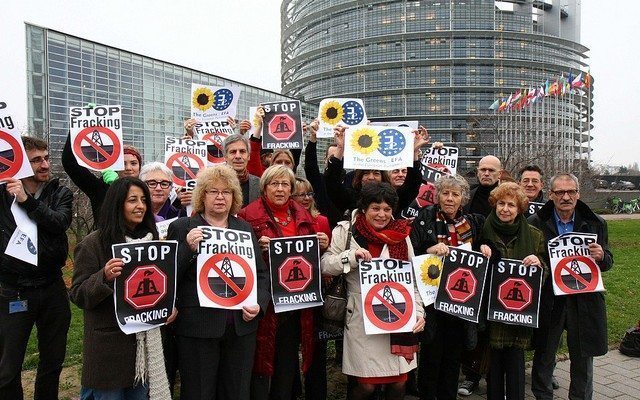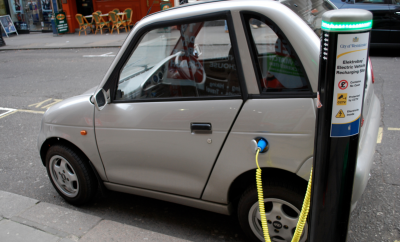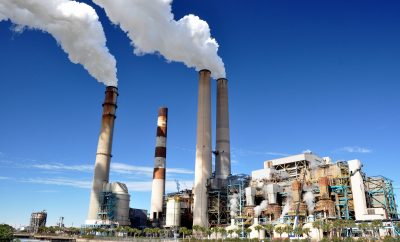
Energy & Environment
Fracking and the Environment
Fracking. The word is thrown around in newspapers, in political debates, in discussions about the future of our global climate change problem. But what does it actually mean? What effect does it have on our environment and economy? Is it even legal? Read on to learn about fracking, the legal framework in place to permit it, and the arguments about the practice.
What is fracking?
Fracking–more scientifically referred to as hydraulic fracking–is the injection of fluids, including water and toxic chemicals into oil and gas wells at high pressure in order to extract the gas and oil. The fluids are projected at the earth with such strong force that it creates cracks from which the gas or oil can freely flow. It mirrors the hydraulic fractures can happen in the earth naturally.
What’s the law on fracking?
The Energy Policy Act of 2005, passed by Congress on July 29, 2005 and signed into law by President George W. Bush on August 8, 2005, is “an act to ensure jobs for our future with secure, affordable, and reliable energy.” It provides incentives for diversifying sources of energy production. This includes ensuring increased use of biofuel with gasoline, requiring the Department of Energy (DOE) to study and report on already existent natural gases, and providing tax breaks and guaranteed loans for making energy conservation improvements to homes.
While fracking was not protected under the Energy Policy Act of 2005, the Halliburton Loophole is the nickname for the ability to frack under the Act. Under President Bush and Vice President Cheney, the EPA created an exemption in order to allow hydraulic fracturing (fracking) to be legal.
The exemption is on page 102, Section 322 in the EPA.
SEC. 322. HYDRAULIC FRACTURING.
Paragraph (1) of section 1421(d) of the Safe Drinking Water Act (42 U.S.C. 300h(d)) is amended to read as follows:
‘‘(1) UNDERGROUND INJECTION.—The term ‘underground injection’—
‘‘(A) means the subsurface emplacement of fluids by well injection; and
‘‘(B) EXCLUDES—
‘‘(i) the underground injection of natural gas for purposes of storage; and
‘‘(ii) the underground injection of fluids or propping agents (other than diesel fuels) pursuant to hydraulic fracturing operations related to oil, gas, or geothermal production activities.’’
There are no regulations that require documenting the chemicals used during fracking, or their possible health or environmental effects. As a result, multiple states, the most recent being California, have passed laws to create fracking regulations. In 2011, Texas became the first state requiring companies to disclose the chemicals being used.
What’s the argument against current regulations on fracking?
Many argue that these state regulations still lack crucial information that all residents should know about. Additionally, certain state regulations and laws have trade secrets that keep important information about different chemicals from the public. The Clean Water Act found 32 million gallons of diesel fuel illegally injected into the earth during fracking. Evidence indicates that over six hundred different chemicals are used to frack. The popular HBO documentary Gasland 2 shows footage of Dimock, Pennsylvania where faucet water could be lit on fire because of contamination due to fracking. Many argue that the government should restrict the use of at least certain chemicals used in the process, or at the very least, require companies to state what materials they are using.
What’s the argument in favor of current regulations on fracking?
Fracking supporters argue that it is economically beneficial to the country. The IHS Cambridge Energy Research Associates reported that fracking “supported 2.1 million jobs, added almost $75 billion in federal and state revenue, contributed $283 billion to the gross domestic product, and lifted household income by more than $1,200.” Fracking has promised us affordable and clean natural gas to help combat the foreign fuels we have now. Approximately 20 to 30 billion barrels of natural gas and oil have been recovered due to fracking. Currently, there is no other technology that retrieves natural gas and oil in places from places that fracking can reach.
Conclusion
Fracking has entered the national discourse as a possibly effective way to get some non-renewable resources that are available but difficult to reach. The regulations over whether or not we can use fracking to reach oil and gas resources have evolved over time, but they have done very little to stem the greater debate about the environmental and economical impacts of the process.
Resources
Primary
U.S. Congress: The Energy Policy Act of 2005
Additional
FracFocus: Chemical Disclosure Registry
Clean Water Action: Fracking Laws and Loopholes
Independent Voter Network: Middle Ground is Possible for Debate on Fracking in America
State Impact: Pennsylvania’s Disclosure Rules: What the Frack’s in the Ground
Slate: Who’s Fracking in Your Backyard?
EnergyFromShale.org: Pioneering America’s Energy Future
Real Clear Politics: The Breathtaking Benefits of Fracking
Reason.com: The Promised Land of Fracking
American Enterprise Institute: Benefits of Hydraulic Fracking
Elsevier: Fracking–The Pros and Cons
Inhabitat: The Costs and Benefits of Fracking
Huffington Post: Fracking Pros and Cons–Weighing in on Hydraulic Fracturing
Environmental Protection Agency: EPA Announces Final Study Plan to Asses Hydraulic Fracturing
—
Nicole Counts is a freelance writer, activist, and lover of books. She is graduate of Temple University with a BA in English and she lives in New York City. Contact Nicole at staff@LawStreetMedia.com.
Featured image courtesy of [greensefa via Flickr]









Comments